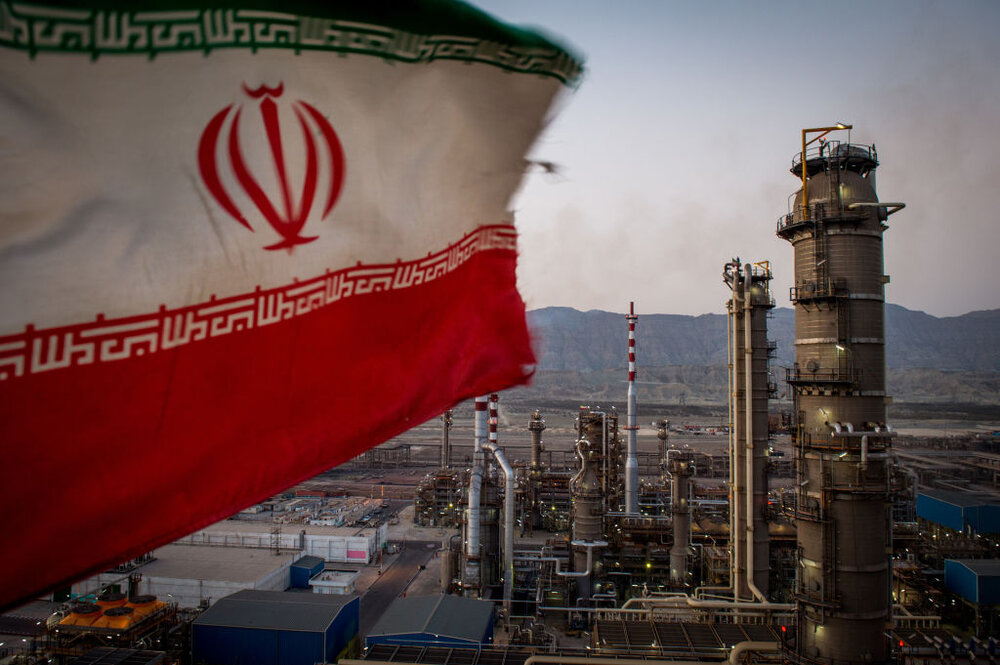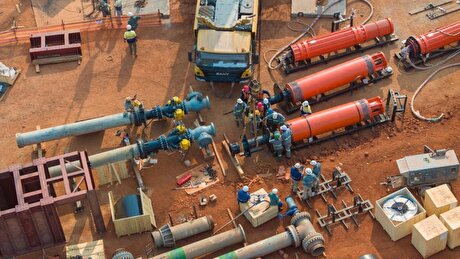
Oil for development” budget, challenges and opportunities

Last week, Head of the Country’s Budget and Planning Organization (BPO) Mohammad Baqer Nobakht said “In the next year’s budget – it starts on March 19, 2020 – oil revenues will be only spent for development projects and acquisition of capital asset, and not even one rial is going to go to government expenditures and other areas.”
At first glance, the idea is very appealing and it seems if the government manages to pull it off, it will be a significant step for Iran in its movement toward an oil-independent economy. However, it seems that cutting oil revenues from the budget and allocating them only to a specific part of the country’s expenditures is not going to be an easy task.
Although, BPO has already suggested various substitute sources of revenue to replace those of oil, some experts believe that the offered alternatives are not practical in the short-term.
So, how successful will the government be in executing this plan? What are the challenges in the way of this program? What are the chances for it to become fully practical next year?
To answer such questions and to have a clearer idea of the notion, let’s take a more detailed look into this [so called] ambitious program.
The history of “oil for development”
It is not the first time that such a program is being offered in Iran. Removing oil revenues from the budget and allocating it to development projects goes way back in Iran’s modern history.
In 1927, the Iranian government at the time, decided to go through with a plan for removing oil revenues from the budget, so a bill was approved based on which oil incomes were merely allocated to the country’s development projects.
This law was executed until the year 1939 in which the plan was once again overruled due to what was claimed to be “financial difficulties”.
Since then up until recently, Iran has been heavily reliant on its oil revenues for managing the country’s expenses. However, in the past few years, and in the face of the U.S. sanctions, the issue of oil being used as a political weapon, made the Iranian authorities to, once again, think about reducing the country’s reliance on oil revenues.
In the past few years, Iran’s Supreme Leader Ayatollah Seyed Ali Khamenei has repeatedly emphasized the need for reducing reliance on oil and has tasked the government to find ways to move toward an oil-independent economy.
Now that Iran has once again decided to try the “oil for development” plan, the question is, what can be changed in a program that was aborted 80 years ago to make it more compatible with the country’s current economic needs and conditions.
The substitute sources of income
Shortly after BPO announced its decision for cutting the oil revenues from the next year’s budget, the Head of the organization Mohammad-Baqer Nobakht listed three alternative sources of income to offset oil revenues in the budget planning.
According to the official, elimination of hidden energy subsidies, using government assets to generate revenue and increasing tax incomes would be the main sources of revenues to compensate for the cut oil incomes.
In theory, the mentioned replacements for oil revenues, not only can generate a significant amount of income, but they could, in fact, be huge contributors to the stability of the country’s economy in the long run.
For instance, considering the energy subsidies, it is obvious that allocating huge amounts of energy and fuel subsidies is not a good strategy to follow.
In 2018, Iran ranked first among the world’s top countries in terms of the number of subsidies which is allocated to energy consumption with $69 billion of subsidies allocated for various types of energy consumption including oil, natural gas, and electricity.
Based on data from the International Energy Agency (IEA), the total amount of allocated subsidies in Iran equals 15 percent of the country’s total GDP.
The budget that is allocated for subsidies every year could be spent in a variety of more purposeful, more fruitful areas. The country’s industry should compete in order to grow, people must learn to use more wisely and to protect the environment.
However, practically speaking, all the above-mentioned alternatives are in fact long term programs that take time to become fully operational. A huge step like eliminating hidden subsidiaries cannot be taken over a one or event two-year period.
The development aspect
One big aspect of the government’s current decision is the “development” part of the equation.
A big chunk of the country’s revenues is going to be spent on this part and so the government is obliged to make sure to choose such “development” projects very wisely.
Deciding to allocate a huge part of the country’s income on a specific sector, makes it more prone to corruption, and therefore, a plan which is aimed to help the country’s economy could become a deteriorating factor in itself if not wisely executed.
The question here is, “Is the government going to spend oil money on all the projects which are labeled as ‘development’ even if they lack the technical, economic and environmental justification?”
So, the government needs to screen development projects meticulously and eliminate the less vital ones and then plan according to the remaining truly-important projects.
Final thoughts
Even if the “oil-free” budget is a notion that seems a little ambitious at the moment, and even if there are great challenges in the way of its realization, but the decision itself is a huge step toward a better future for Iran’s economy. Although realizing this plan seems fairly impossible in the short-term, it surely can be realized with proper planning and consideration in the long term.
Sooner or later Iran has to cut off the ties of reliance on oil incomes and start moving toward a vibrant, dynamic and oil-free economy; a journey of which the first step has been already taken.


Trump weighs using $2 billion in CHIPS Act funding for critical minerals

Codelco cuts 2025 copper forecast after El Teniente mine collapse

Electra converts debt, launches $30M raise to jumpstart stalled cobalt refinery

Abcourt readies Sleeping Giant mill to pour first gold since 2014

Barrick’s Reko Diq in line for $410M ADB backing

Nevada army depot to serve as base for first US strategic minerals stockpile

Tailings could meet much of US critical mineral demand – study

Viridis unveils 200Mt initial reserve for Brazil rare earth project

SQM boosts lithium supply plans as prices flick higher

Energy Fuels soars on Vulcan Elements partnership

Northern Dynasty sticks to proposal in battle to lift Pebble mine veto

Giustra-backed mining firm teams up with informal miners in Colombia

Critical Metals signs agreement to supply rare earth to US government-funded facility

China extends rare earth controls to imported material

Galan Lithium proceeds with $13M financing for Argentina project

Silver price touches $39 as market weighs rate cut outlook

First Quantum drops plan to sell stakes in Zambia copper mines

Ivanhoe advances Kamoa dewatering plan, plans forecasts

Texas factory gives Chinese copper firm an edge in tariff war

Energy Fuels soars on Vulcan Elements partnership

Northern Dynasty sticks to proposal in battle to lift Pebble mine veto

Giustra-backed mining firm teams up with informal miners in Colombia

Critical Metals signs agreement to supply rare earth to US government-funded facility

China extends rare earth controls to imported material

Galan Lithium proceeds with $13M financing for Argentina project

Silver price touches $39 as market weighs rate cut outlook

First Quantum drops plan to sell stakes in Zambia copper mines

Ivanhoe advances Kamoa dewatering plan, plans forecasts

















